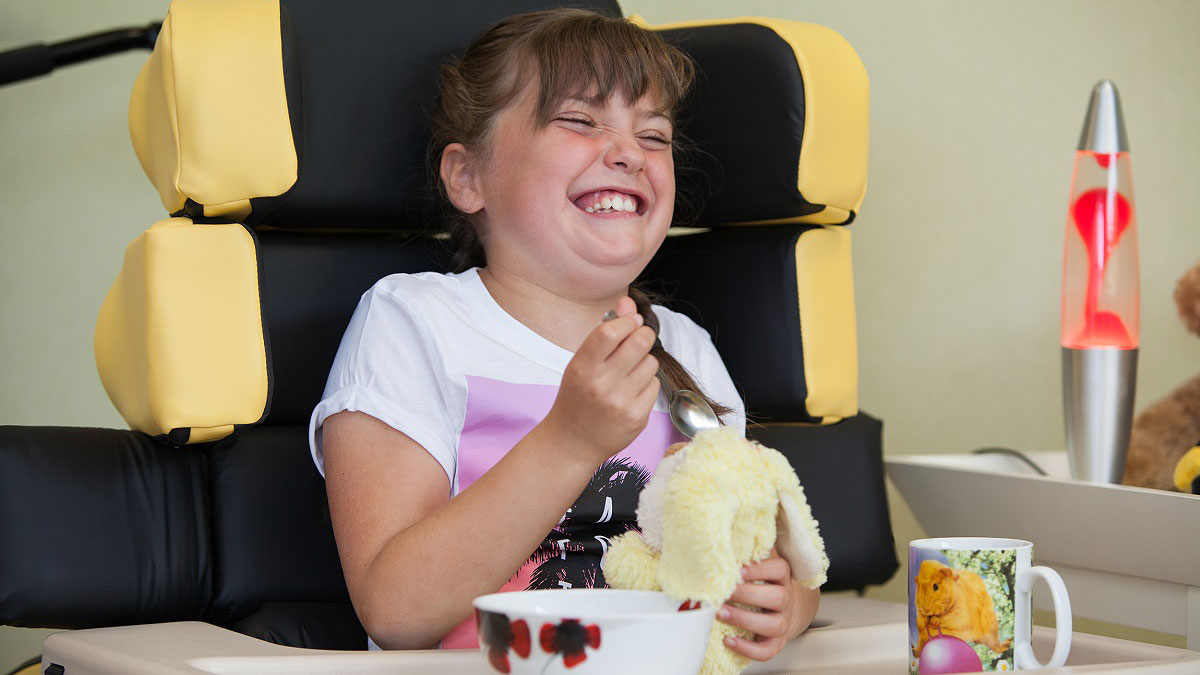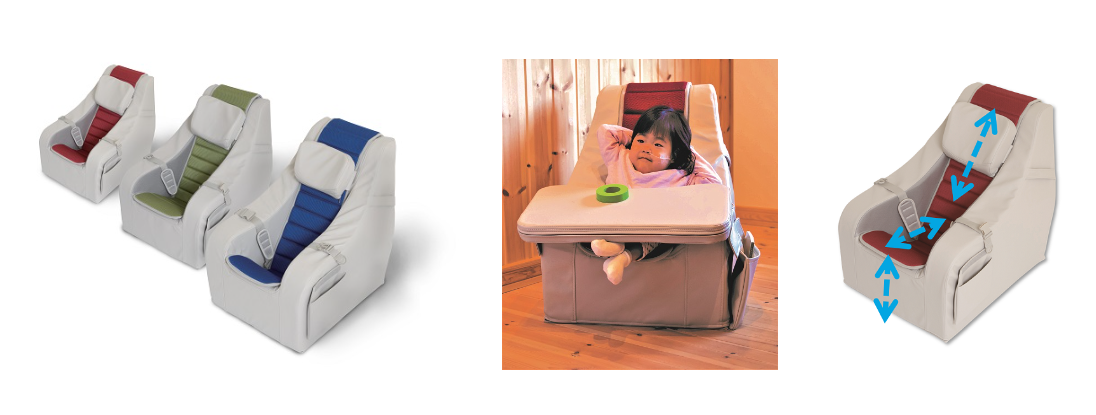A GUIDE TO IMPROVING SEATING COMFORT

After a long day in the school classroom, or at work, most of us look forward to getting home, taking our shoes off and relaxing in our favourite seat. For a child or adult with a physical disability – this is not as easy to do, but it is just as important that they also get their relaxation time.
Normally, our postures continuously shift and change position to facilitate movement so that we can engage in functional activities1. For people with mild to complex physical disabilities - including cerebral palsy, downs syndrome, early stages of muscular dystrophy, developmental delay and other neurological disorders - postural instability is common2.

There are various conditions that clients can present but the end goal is always the same3;
• Promote comfort, relaxation and safety;
• Prevent, delay or manage postural deterioration;
• Distribute pressure across the weight-bearing surface;
• Enhance physiological functions;
• Provide a stable base of support;
• Encourage alignment of body segments;
• Free body parts for movement and improve function;
• Facilitate normal movement patterns or control abnormalities;
• Normalise tone or decrease its abnormal influence on the body;
• Decrease fatigue and encourage energy conservation;
• Improve interaction and social inclusion.
According to a recent study, research has evidenced the benefits of adaptive seating to include improved postural alignment, development of motor skills, prevention of fixed deformity and facilitation of upper extremity function4. As such, it is imperative that health professionals prescribing seating equipment are well informed regarding the fundamental seating principles that dictate the sitting postures of people with a disability, and the impact on long term health and function. Supportive wheelchairs and specialised seating systems provide stability and comfort, with the ultimate goal of achieving function. This stability and comfort remains critical when a person is relaxing as the stability provides a means to function.
There are many alternative specialist seating systems available. It all depends on individual needs and goals so the best guide is to look for supportive seating options that provide a range of functions for the health of body systems, including4:
- Homeostatic Processes - breathing, vision, digestion, circulation, temperature regulation.
- Musulosketal Functioning - pelvic stability; trunk and head alignment; leg and foot positioning.
- Neurological Functioning – sensory experiences to advance cognitive and communication skills.
These days, therapists focus on postural management over a 24 hour period – rather than isolated day-parts. Unsupported postures can result in asymmetries that impact on posture during the day and night. The body is a mobile structure which is vulnerable to distortion but also susceptible to restoration, as long as correct biomechanical support is applied5 .
Alternative indoor seating options to promote relaxation, and function may include the following:
Seating Systems - SmartSeat Pro HydroTilt HydroFlex
These seating systems from Careflex look like a regular lounge chair – but they are so much more than that! Modular Seating Systems combine comfort with good postural control and support. They are highly adjustable for individuals, especially those with a complex posture and pressure management needs. Modular chairs feature a tilt in space mechanism and back angle recline which provides combined height and angle adjustment. Other important features include multi-adjustable trunk support and armrests which help prevent shoulder strain and increase upper body stability, as well as seat depth and width adjustment. These features make it an ideal choice for any lounge room, class room or therapy space.

Floor Sitters - Gravity Relaxation chair Special Tomato
Floor Sitters like the Gravity Relaxation Chair and Special Tomato Sitter are ideal for the home or school environment. These support and positioning systems augment postural control for a wide range of individuals and, in most cases, create an optimal solution for many occupational therapy requirements. Floor sitters are a great option because they are light, portable and simple to use by parents or caregivers and suit a wide range of client groups with varied occupational therapy needs.
Floor Sitters have their own unique characteristics. For example, The Gravity Chair follows the principle 'tension and relaxation' with a low centre of gravity that provides stable, supportive and comfortable positioning that promotes excellent postural and structural control. With patients who spasm, the Gravity chair absorbs the tension. After the spasm, the chair brings the person back into the original position. People who can only lie down are able to learn how to sit in the Gravity Chair.

The Special Tomato Sitter offers a range of therapeutic benefits as well as comfort and support. The soft-to-touch inner core is a specially formulated foam that allows children to sit comfortably for longer periods of time. It helps promote proper head, neck and trunk alignment. Unique shaped wooden bases provide support and strength.

Products highlighted in this article are just a fraction of the many choices available for alternative seating. Choosing the right kind of seating is best done by talking to an experienced occupational therapist who will evaluate individual goals to achieve optimal positioning.
To see all the options available in the Astris PME range of alternate seating, visit our website https://www.astris-pme.com.au/products/alternate-indoor-seating
- References:
- 1,4 Neville, Laura Neville, ‘The Fundamental Principles of Seating and Positioning in Children and Young People with Physical Disabilities’ (2005)
- 2Leckey http://www.leckey.com/know-how/the-fundamental-principles-of-seating-and-positioning-in-children-with-physical-disabilities
- 3 Careflex https://www.careflex.co.uk/health/conditions/
- 5 Hill & Goldsmith, 2010 (Medifab)
Images: Careflex UK, Medifab, Special Tomato www.masterfile.com

